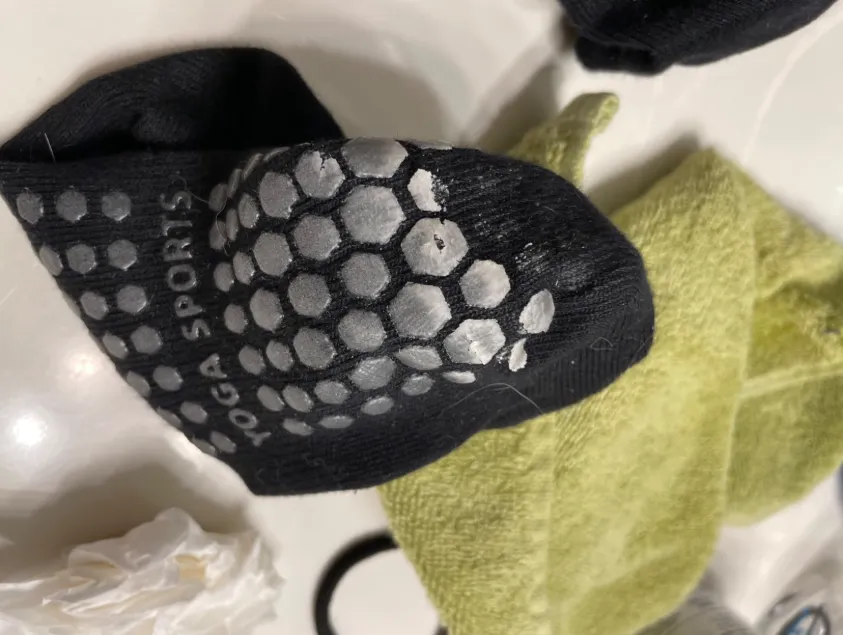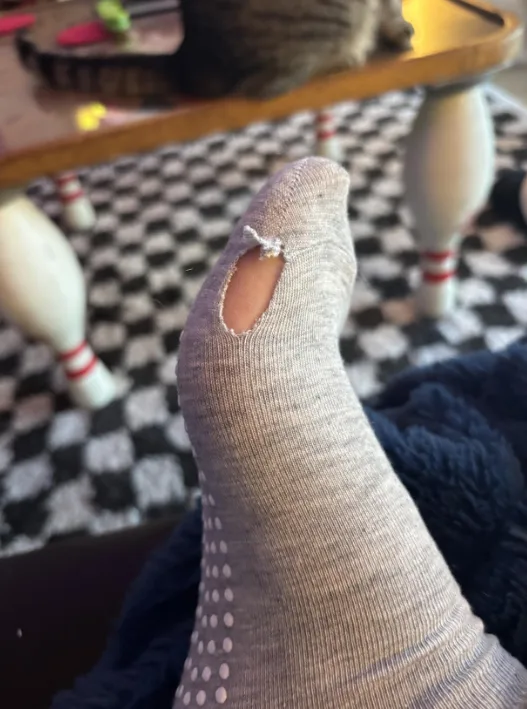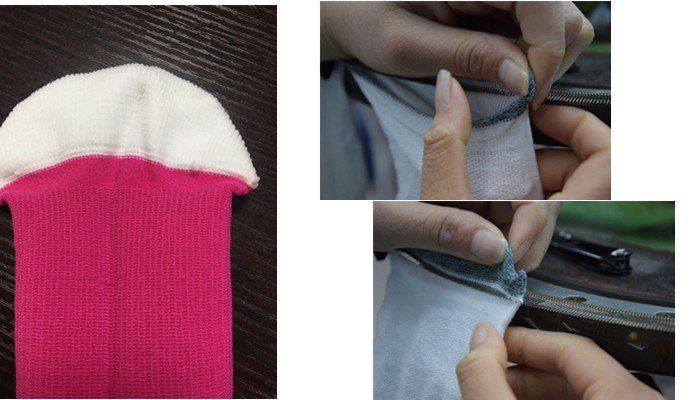Introduction
As a sourcing manager or brand buyer, quality issues in grip socks can quickly escalate into costly business risks. A single shipment with peeling grips or fading colors may lead to bulk returns, strained relationships with distributors, and damage to your brand reputation. Reliable, durable, and safe products are not only about customer satisfaction—they directly affect your margins and long-term partnerships.
As a wholesale grip socks supplier for brands, we help you avoid common issues and secure reliable products at scale. This article systematically breaks down the common quality problems in grip socks, analyzes their root causes, and shows you how to identify and collaborate with trustworthy suppliers who consistently deliver premium products. Additionally, we offer practical strategies to communicate your quality assurance clearly to buyers and end customers. If you aim to build long-term partnerships and reduce quality risks, this guide is designed for you.
Common Quality Problems in Grip Socks
Anti-slip Rubber or Silicone Detaching Easily
One of the most frequent and frustrating complaints concerns the anti-slip silicone or rubber pads peeling off after minimal use or washing. This problem arises primarily due to inferior bonding processes and cheap materials.

Many low-end grip socks use PVC-based anti-slip pads, which, while cost-effective, suffer from weak adhesion. As highlighted by a Football Socks brand, PVC pads tend to peel off entirely when exposed to temperature fluctuations during washing or intense physical activity. This leaves the sock bottom smooth and defeats the core function of grip socks, risking user safety and damaging your brand’s credibility.
Advanced factories use heat bonding or vulcanization techniques to affix premium silicone pads, ensuring long-lasting adhesion even after multiple washes. This difference in production methods is critical. You want to avoid suppliers that rely on simple gluing or poor adhesive formulas, which directly lead to pad detachment. changes during washing or intense activity, the entire anti-slip pad often peels off, ruining the grip function.
As a buyer, always request wash-test videos or third-party adhesion reports before confirming bulk orders. This simple step helps you verify whether the supplier uses advanced heat bonding rather than cheap adhesives.
Poor Grip Performance
Even if silicone pads remain attached, many grip socks from low-quality sources fail to provide adequate anti-slip functionality. This is often due to:
- Sparse or uneven silicone dot distribution leading to insufficient contact area
- Silicone materials with low friction coefficients or rapid wear
- Insufficient coverage of the sole, neglecting key pressure points such as heel and toe
As detailed by a gym studio owner, inferior grip socks compromise the stability needed during yoga, Pilates, barre, and other studio workouts. Users experience slipping, instability, and lack of confidence, which defeats the entire purpose of grip socks. This reduces repeat purchases and increases complaints.
Uneven Silicone Distribution Causing Discomfort
Manufacturers that do not carefully control the silicone application may produce socks where some areas have thick, hard patches while others lack grip altogether. This uneven pattern not only reduces grip consistency but can also cause discomfort for wearers due to uneven pressure points.
High-quality brands pay special attention to even and reasonable silicone coverage, ensuring stable support from heel to toe rather than a few isolated dots, as highlighted by a famous grip socks brand.
Color Fading and Bleeding
Color quality is another overlooked but important factor. Cheap socks often use low-grade dyes that fade or bleed easily after washing or sweating, leading to:
- A worn-out, unattractive appearance
- Color transfer staining feet or other clothing
- Negative user feedback and returns
Reliable socks should undergo rigorous colorfastness treatment to retain vibrant hues and prevent bleeding. This contributes to the overall perception of premium quality.
Before committing to large orders, ask the factory for colorfastness certifications and run your own small-batch wash tests. This prevents costly complaints and inventory write-offs later.
Weak Stitching and Poor Durability

Socks made with inferior yarns and lax stitching standards quickly lose shape and durability. Common issues include:
- Loose or unraveling seams at toes and cuffs
- Formation of holes or thinning fabric areas
- Loss of elasticity, causing sagging and poor fit
Many socks manufacturers and other experts emphasize that durable grip socks combine tight stitching with yarn blends incorporating elastane or spandex to maintain form and resilience after repeated use and washing.
You should insist on receiving detailed QC reports that include seam strength testing. Factories that refuse or provide vague answers are often red flags.
Why These Problems Matter to Your Business
Imagine your customers ordering grip socks from you expecting a safe, comfortable experience, only to receive products that lose their grip after a few uses or that fall apart quickly. The consequences are costly:
- Returns, refunds, and extra logistics expenses
- Negative reviews and loss of repeat business
- Damaged reputation for quality and reliability
- Increased customer service workload dealing with complaints
- Potential safety risks leading to liability issues
As a sourcing professional or brand owner, these problems can severely affect your margins, customer loyalty, and long-term growth. Worse, once your brand is associated with low quality, regaining trust is difficult.
You don’t want to waste time and money chasing suppliers who fail to meet your standards or risk your brand image by selling inferior grip socks.
How to Solve Grip Socks Quality Issues
As a sourcing manager or brand operator, you don’t just want products—you want reliable, scalable, and risk-controlled supply. That begins with partnering with factories that understand how to deliver consistent grip sock quality at scale.
The following five actions will help you avoid most quality pitfalls—and we’ve seen many successful brands apply these principles, including our own clients.
Always Start with Prototyping and Pre-Approval
Before mass production, confirm key details like fit, grip placement, material stretch, and color accuracy. At Max Hosiery, we provide a sampling service where you receive a fully finished prototype to approve before any bulk order is started. This ensures your brand specifications are clearly aligned and helps avoid rework or miscommunication.
Inspect During Production—Remotely or On-Site
Don’t wait until the socks are packed. Reliable quality control happens during production, not just at the end. We run live, timestamped inspections during key stages—knitting, linking, and boarding—and send updates directly to you. You’re also welcome to assign your own QC agent to conduct on-site inspections at our factory, or request video-based remote sampling inspections. This flexibility gives you full control over the process without needing to be physically present.
Implement Layered Quality Checks at Every Stage
To prevent common grip sock defects like peeling grips, poor elasticity, or loose threads, quality must be enforced at each manufacturing phase. At Max Hosiery, we maintain three internal QC gates:

- Knitting: Ensures yarn density and structure
- Linking/Closing: Verifies seam strength and toe finish
- Boarding: Confirms sock shape, colorfastness, and grip adhesion
Each stage is audited to AQL 2.5 or better, so no weak batches pass through unnoticed.
Demand a Full Post-Production Inspection
Even with in-process checks, a final inspection is critical. Our team runs a 100% visual scan, looking for aesthetic issues and functional flaws. We also perform grip adhesion and wash-cycle tests to verify performance under actual use conditions. If needed, we can share inspection footage or send samples from the finished lot for your confirmation before shipment.
Look for Accountability—Not Just Promises
Words like “strict QC” mean little without action. That’s why we back our quality with a 3-year product warranty: if any pair fails under normal use, we replace it—no discussion. This not only protects your brand but signals that we take responsibility for every shipment.
Whether you’re sourcing for a yoga studio chain or an online activewear brand, this level of visibility helps you control risk and build trust across your downstream sales channels.
Communicate Your Quality Commitment Like Leading Brands
Solving internal quality issues is one thing. Communicating your quality standards to buyers and end customers is another. Brands like Sunday League and SHASHI have mastered this balance.
They use FAQ sections, grip material comparisons, and educational blogs to clearly say: “We know what common defects look like, and here’s how we avoid them.” This educates the market and builds long-term trust.
At Max Hosiery, we encourage our clients to do the same. We assist with content, product feature tables, and grip test media so that you’re not just delivering a quality product—you’re showing it. That’s how B2B buyers convert into repeat buyers.
Practical Recommendations to Strengthen Your Brand and Client Trust
- Feature a prominent “No Defects Commitment” section on your main site, listing core quality promises like “No peeling grips,” “No color fading,” and “Reinforced stitching.”
- Support your claims with real evidence, including quality testing videos, inspection photos, and client testimonials. Max Hosiery’s existing anti-pilling and durability test videos can effectively demonstrate your quality standards.
- Maintain a consistent quality message across all channels—homepage, product pages, blogs, and customer communications.
- Regularly publish expert articles sharing industry insights and educating clients on grip sock quality factors. This transparent knowledge-sharing builds authority.
- Invest in professional website design, crisp product photography, and clear contact options to convey reliability and professionalism.
FAQ
How can I tell if a grip sock will have silicone peeling issues?
Check if the supplier uses heat-press bonding instead of glue. Also ask whether they use certified silicone instead of PVC, which is prone to detachment after washing or high-friction use.
What grip design should I look for when sourcing socks for studios or athletes?
Look for even grip distribution from heel to toe. Uneven or sparse layouts reduce traction and can cause discomfort during movement-based activities.
How do I avoid socks that fade or bleed color?
Choose suppliers who use colorfast yarns and reactive dyeing processes. You can request test reports showing wash resistance and fabric stability.
What quality control evidence should I request before placing a bulk order?
For bulk sourcing, ask for third-party testing reports, wash-cycle videos, and live inspection photos. A serious supplier will provide transparent, verifiable proof rather than vague promises.
How do I ensure I’m not sourcing low-end defective grip socks?
Work with factories that focus on B2B standards, not consumer bulk. Look for those who understand stitching, elasticity, grip bonding, and can provide verified samples and production audits.
How do I make sure quality is consistent across multiple batches?
Require the supplier to follow AQL sampling standards and share batch-by-batch inspection records. This ensures that a 10,000-pair order has the same quality control as the initial sample.
Introduction
Sourcing grip socks with a clear understanding of common quality pitfalls helps you avoid costly mistakes and protect your brand’s reputation. Working with factories that use superior materials, advanced bonding techniques, precise silicone application, and thorough quality control ensures products that meet or exceed customer expectations.
Max Hosiery specializes in customized grip socks made under strict quality protocols. Our factory applies advanced heat bonding for durable silicone pads, guarantees uniform grip coverage, uses high-quality dyes, and reinforces stitching to ensure lasting performance. We welcome brands and retailers who value quality and seek dependable partners to grow their grip sock business confidently.
Reach out to us today to learn how we can assist you in sourcing premium grip socks tailored to your exact requirements.
